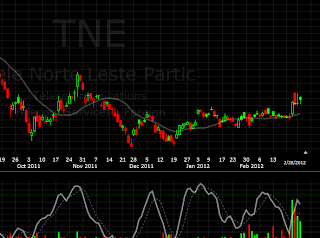http://drduru.com/onetwentytwo/2012/02/19/trading-after-overbought-period-ends/T2108, the percentage of stocks trading above their 40-day moving averages (DMAs).
Here are the fundamental conclusions I generated from analyzing the S&P 500′s behavior between overbought periods since 1986. For convenience, I will call this the “interim period.”
Extended rallies are typically characterized by a series of overbought periods.
There is no relationship between the duration of the overbought period and the maximum loss before the next overbought period. However, the largest losses have all occurred after overbought periods that lasted 20 days or less. After longer overbought periods, the maximum loss during the interim period has been 10%.
There is also little relationship between the length of the interim period and the maximum loss during that time. However, losses of 10% or greater have ALL occurred when the interim period lasted between 50 and 155 days.
After excluding interim periods that included oversold periods, there is a stronger relationship between the duration of the interim period and the maximum loss. The vast majority of interim periods have lasted less than 50 days.
Given these observations, traders should treat rules for trading between overbought periods as general guidelines. The risks are worth the rewards IF traders size positions modestly, prepare to make multiple trades, take at least some profits after moderate declines, AND stop out by the time T2108 has begun a new overbought period.
Specifically, traders should follow these guidelines:
Short early but in moderate size once an overbought period begins.
Never build a “full” trading position just in case the overbought period lasts longer than 20 days, and/or reduce the size of the bearish position after 20 days. Hedging against the bearish position counts as a reduction in risk.
Start taking profits no later than a decline of 5% or so on the S&P 500 during the interim period. Stop out by the time the next overbought period begins.






